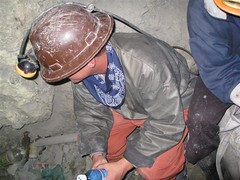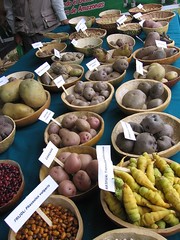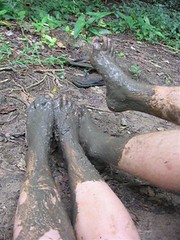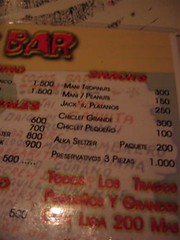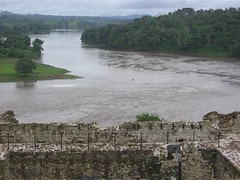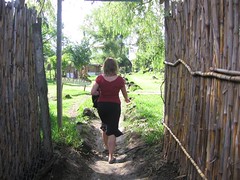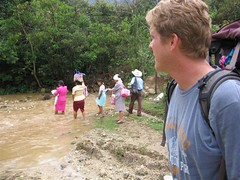 The national beer of Bolivia is Paceña, with the best slogan ever... "Paceña. It`s beer."
The national beer of Bolivia is Paceña, with the best slogan ever... "Paceña. It`s beer."If you spend too much time in Bolivia, you can grow to be quite frustrated with it. It does have spectacular sights, Titicaca, the Salar, and ...ummm... well Titicaca and the Salar, but outside of them nothing really works like it should. For example, leaving Bolivia.
You know a country has problems when it takes a 15 hour bus ride to travel from it`s judicial capital to Santa Cruz, it`s wealthiest and second biggest city (as the crow flies about 200 miles), because no one has ever bothered to pave a road between them. Actually, in places the road is really just a dry riverbed. Or, in the rainy season, the river is where you would want the road to be.
Luckily we were in the dry season. Unluckily we grabbed some salteñas for the road. Really unluckily they had gone bad, and Mary spent 15 long sick hours with a plastic bag and no bathroom nor bathroom stops.
After the 15 hour ride, we arrived in Santa Cruz at 6:30am, an hour and a half before the train ticket window was supposed to open for sales, where we found a line of around 300 people waiting to get tickets. We decided to check into a hotel and come back for tickets, but by the time we had checked in and got back to the train station, the ticket seller had called it a day as it was noon and all.
The next day all train tickets were sold out, however we were able to purchase tickets for the following day. When we arrived at the train station the next day, eager to leave Bolivia, there were signs up saying the train was cancelled due to striking villagers, and security told us the train probably wouldn`t be going for the foreseeable future.
So we decide to fly. Unfortunately the first travel agent we went to wouldn`t take credit cards, and once we were back from the ATM, the tickets we were trying to book had been sold out. (Why not accept credit cards at a travel agency? Why not book the tickets while we went to the ATM? This is not the way of Bolivia.) Travel agent numero dos found us an 11 hour, 5 leg flight out of Bolivia departing at 4 AM. And that, my friends, is the story of how we left Bolivia. (BTW-- it looks like they`re headed toward civil war nowadays and the trains STILL haven´t left. Lucky for us we`re in Argentina now).








